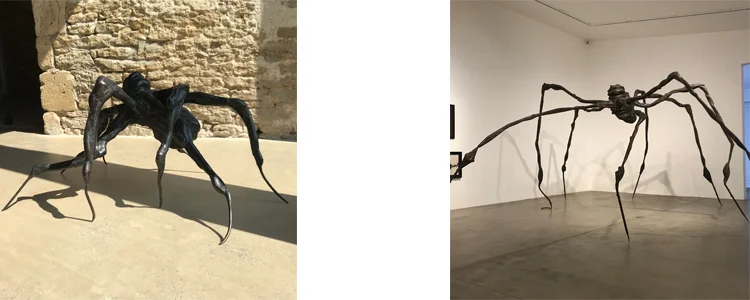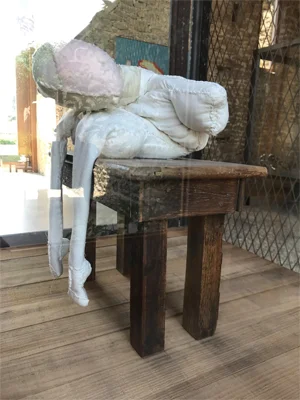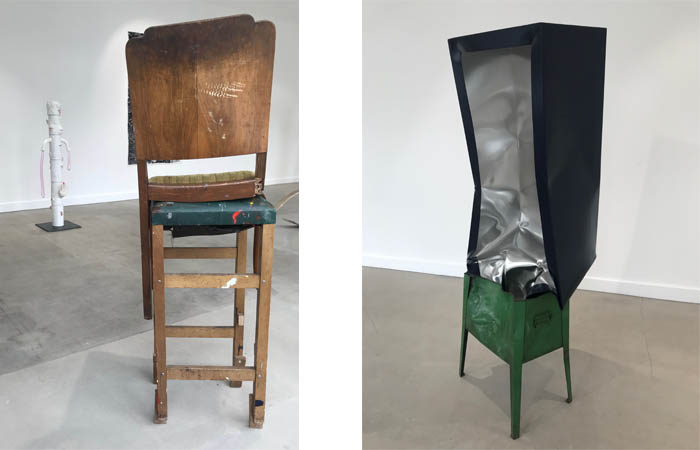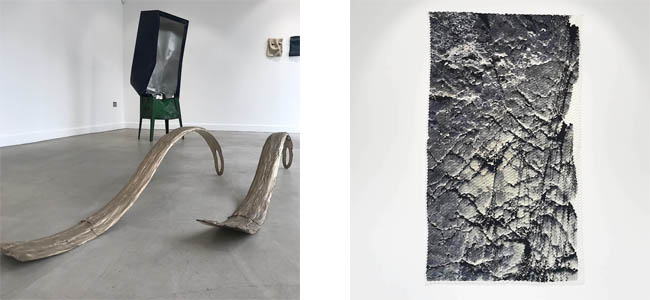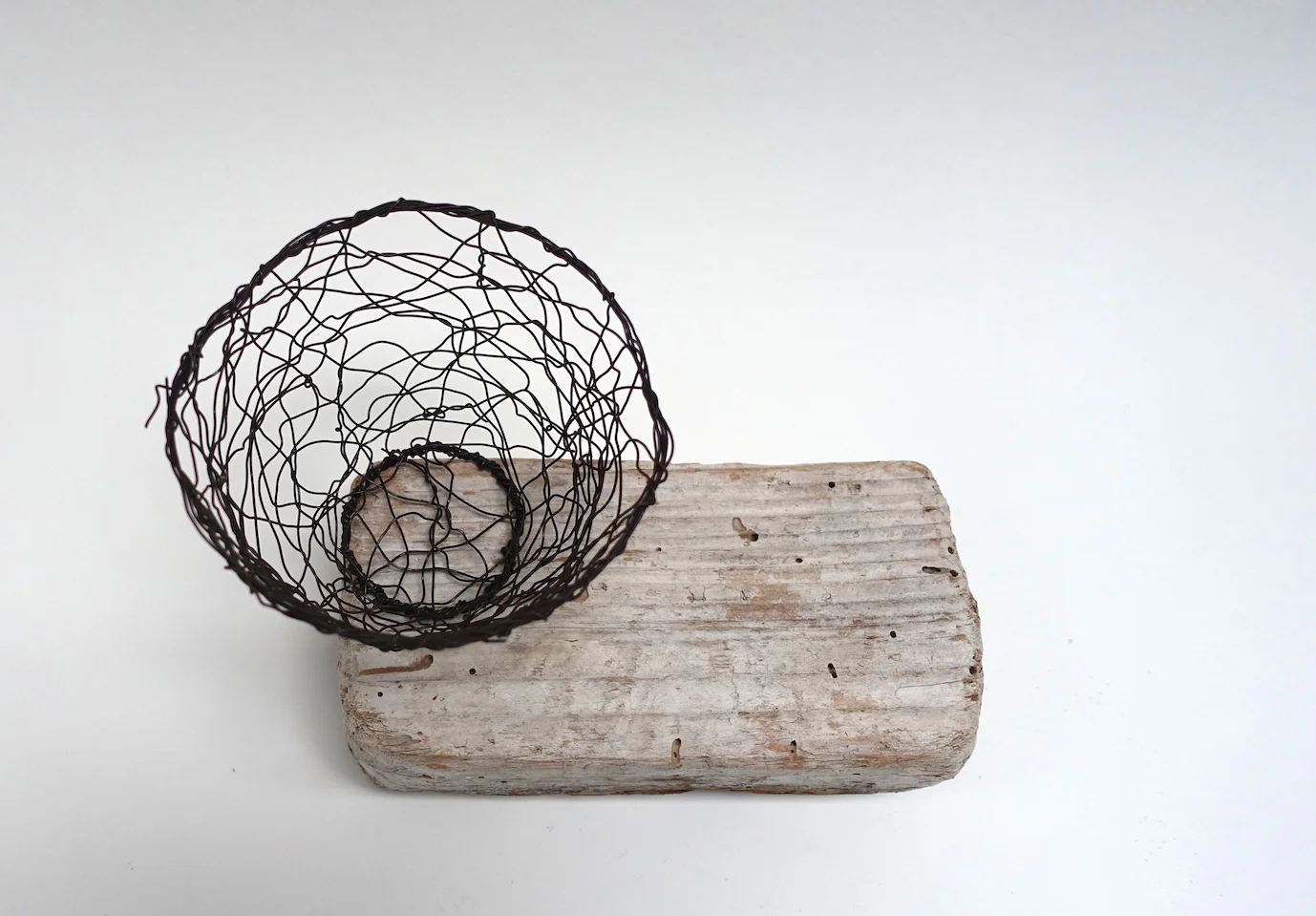Unconscious Landscape is an exhibition currently on show across the five galleries at Hauser & Wirth Somerset drawn from the collection assembled by Ursula Hauser over the past four decades.
A sense of the uncanny runs throughout the show. Louise Bourgeois’s work in particular elicits a response of discomfort, perhaps even anxiety. Two of her iconic spider sculptures are on display.
Spider V, (bronze) Louise Bourgeois 1999 Spider, (steel) Louise Bourgeois 1996
Bourgeois’s Cell forms are equally challenging. It is difficult, if not impossible, for the viewer to remain unmoved by the emotional charge of these works, of which there are three in the exhibition. I found the sense of isolation and pathos emanating from the figure in Cell XXII (Portrait) particularly poignant.
Cell XXII (Portrait), (steel, fabric, wood and glass) Louise Bourgeois, 2000
As I was leaving the gallery I overheard the comment ‘There is a bit of a spider theme running through’, a throw away remark perhaps, but one that encapsulates much about this show. What do spiders do? They produce silk, many different types of silk in order to fulfil different functions. Spiders use the silk to build a drag line (a safety line enabling them to retreat from predators or hang in space) and spin webs. Webs are many and varied too. Some are constructed to catch prey but webs are also used to form retreats (protective shelters for themselves) and to construct egg sacks as nests or cocoons for their offspring.
The artists featured in the exhibition are all women and notions of domesticity, caring, shelter, familial relationships, together with a strong steak of feminism, run through much of the work. Seeing work by several artists brought together in one show brings connections and themes to the fore. Many of these I recognise in my own work as I do the materials and the methods of construction which are so much part of the message.
Trouxa (stitching, moorings, different fabrics and laces) 2004
Unconscious Landscape. Works from the Ursula Hauser Collection continues at Hauser and Wirth Somerset until 8 September 2019
